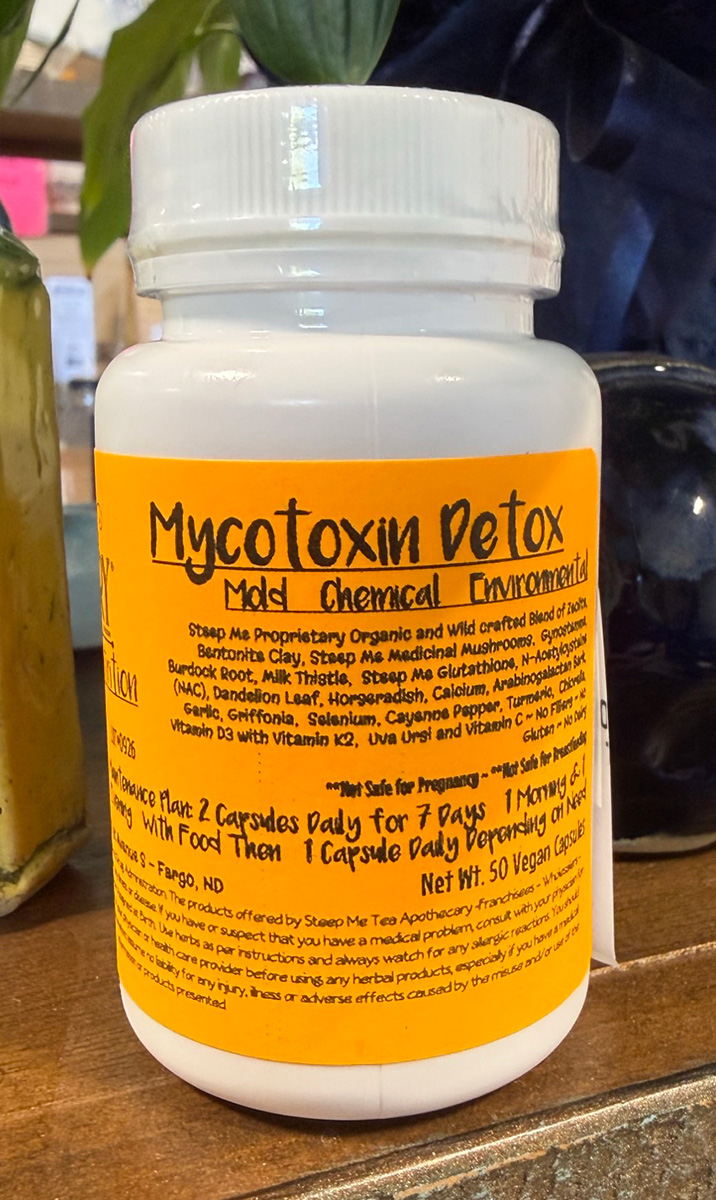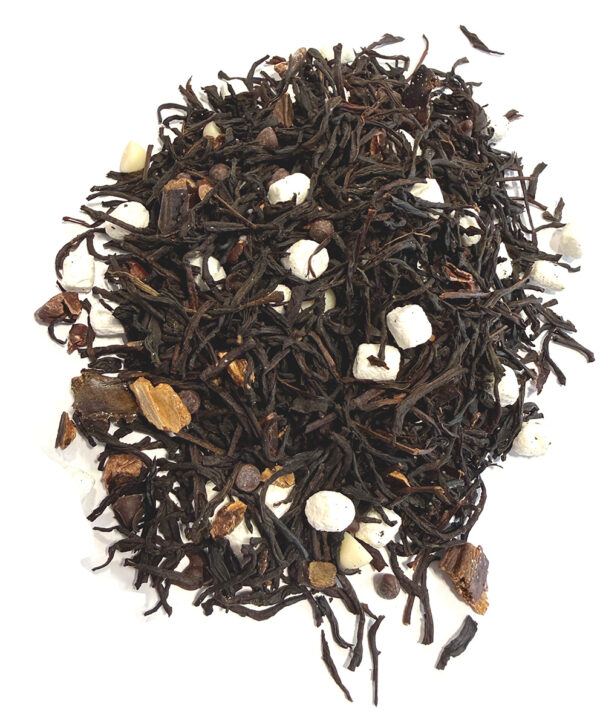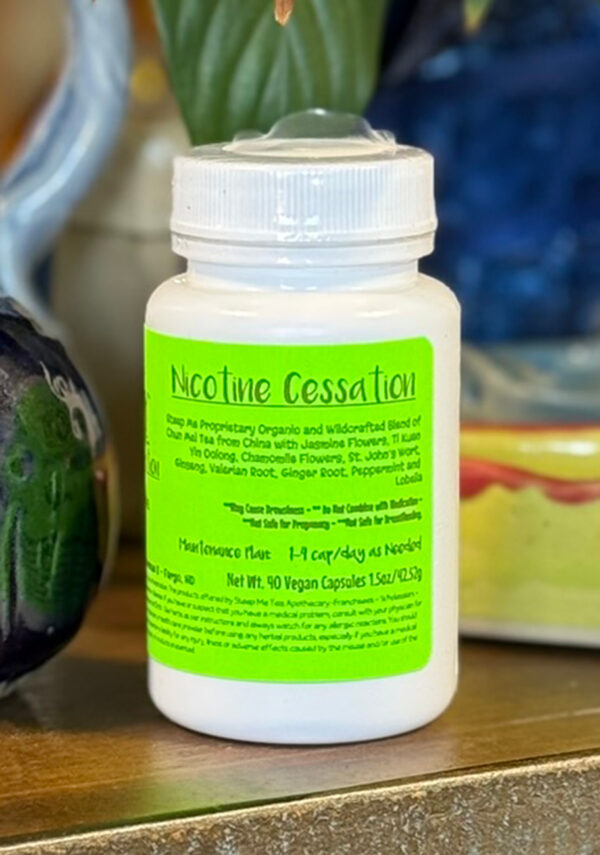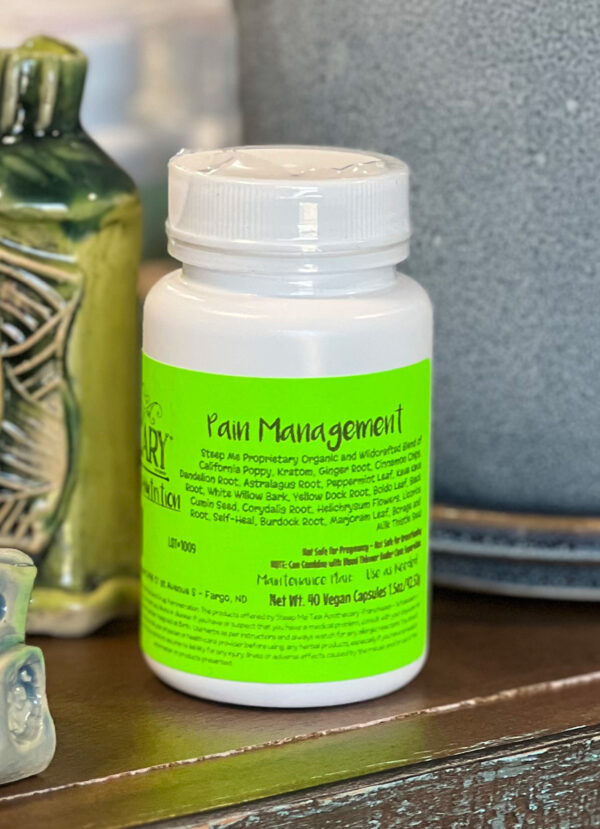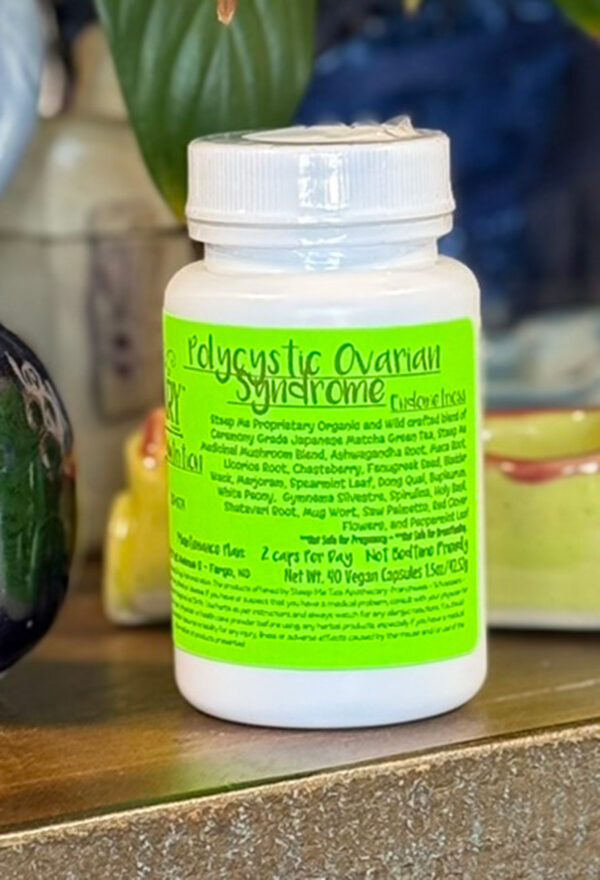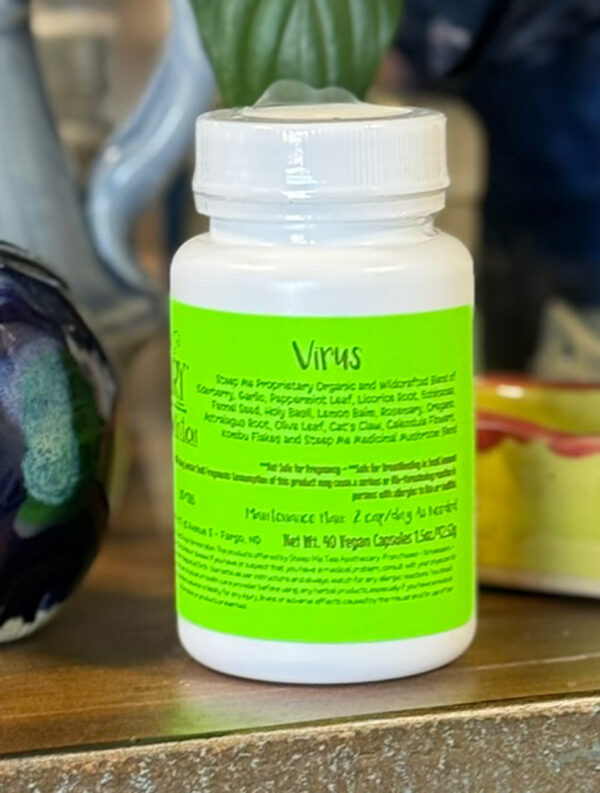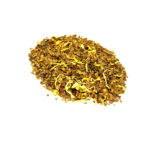With over 400 different kinds of loose tea that will exceed all tea lover’s expectations. You’re sure to find something you will love! All handcrafted by us in North Dakota.
Mycotoxin ~ Mold ~ Chemical ~ Environmental Detox ~ Micro-Nutrition
$90.95
A great blend of healthy and potent herbs and vitamins to help the body with detoxing the effects of Mycotoxins and support Immune Health.
SKU:
Mycotoxin ~ Mold ~ Chemical ~ Environmental Detox ~ Micro-Nutrition
Categories: Capsules, Micro-Nutrition
Description
Blender’s Notes Mycotoxin ~ Mold ~ Chemical ~ Environmental Detox ~ Micro-Nutrition:
Steep Me Micro-Nutrition combinations are a wonderful way to get health benefits from different combinations of Vitamins and Minerals. With this blend we are providing a healthy and potent blend of herbs and vitamins to help the body with detoxing the effects of Mycotoxins and support Immune Health. What are Mycotoxins? Mycotoxins are poisonous substances produced by fungi or mold. They can be toxic for humans when they are eaten, absorbed into the skin, or inhaled. A small amount of mycotoxin can be damaging to human or animal health and even cause death. Poisoning by mycotoxins is called mycotoxicosis. You may be familiar with this condition if you have heard about what happens if you drink moldy coffee. Mycotoxins are an umbrella group of toxins that can grow on the following: Nuts ~ Cereals ~ Spices ~ Dried fruit ~ Apples ~ Coffee beans. Usually, mycotoxins are found in warm and humid conditions. They may be more widespread in our era than in previous times due to global warming. Mycotoxins are spreading in low-income countries where many of the crops they thrive on are staple foods. Often in these countries, people are exposed to smaller amounts of mycotoxin for longer periods. Richer countries have more stringent processes to ensure that this does not happen. There are currently experiments being done to create easy mycotoxin removal techniques that can be used at home, and especially in tropical environments. Mycotoxins are particularly prevalent in coffee. However, it has been shown that this prevalence can be reduced by adequately storing, transporting, and processing coffee. Typically, roasting coffee beans is an essential step. Roasting prevents higher levels of mycotoxins in coffee and renders the product mold-free. The highest levels of mycotoxins in coffee are often found in countries that produce their own internal supply of drinks. Mold exposure symptoms may be grouped in several ways. First, there are two distinct kinds of exposure — acute and chronic. Acute exposure presents symptoms that are very severe and quick to show up. Symptoms are caused by exposure to enormous amounts of mycotoxins in one sitting. Chronic mycotoxicosis is exposure to a low dosage of mycotoxins for an extended period. It can result in cancers and other serious health consequences. Much of the data on mycotoxin poisoning is unreliable. This is because many of the countries most affected have loose regulations. In addition, to utterly understand mycotoxin poisoning, you need to conduct extensive environmental and lifestyle testing. In the case of these countries, both reporting and detecting mycotoxins is not always done. While different strains of mycotoxins produce varying symptoms in people, many of the main symptoms are:
- Difficulty with digestion
- Difficulty digesting proteins.
- Damage to the immune system
- Damage to the lungs
It has been found that these symptoms are worsened by:
- Frequent alcohol consumption
- Malnutrition
- Underlying conditions or diseases
Are You Exposed to Mycotoxins? Learn About What They Are and How to Prevent Exposure
We started this blend on several binders to ensure we are grabbing those toxins. We started with Zeolite. Zeolite is a naturally occurring volcanic mineral with a cage‑like crystalline structure and a strong negative charge. These properties make it act like a molecular “sponge” for positively charged toxins—including many mycotoxins produced by mold. Zeolite’s porous structure and negative charge allow it to adsorb (bind to) mycotoxins, heavy metals, and other positively charged toxins. Once bound, they are conducted of the body through urine or stool rather than being reabsorbed. By binding toxins in the gut and bloodstream, zeolite lowers the load on the liver. This frees up liver capacity for processing other toxins and reduces the risk of enterohepatic recirculation (toxins cycling back into the body). It has been shown to bind not only aflatoxins and ochratoxins (common mold toxins) but also heavy metals, pesticides, and other environmental pollutants. Zeolite can help buffer body pH and improve mineral exchange, which supports cellular resilience during detox, and it may reduce oxidative stress and inflammation triggered by mold toxins, though this effect is secondary to its binding action. Next, we added Bentonite Clay because it has natural binders that can trap mycotoxins in the gut and prevent reabsorption. Bentonite clay has a negative electrical charge and a large surface area, which allows it to attract and bind positively charged toxins, including many mycotoxins. Once bound, these toxins are conducted of the body through stool, reducing their recirculation and reabsorption in the intestines. Mold exposure often leads to mycotoxin buildup that stresses the immune system and liver. By binding toxins in the gut, bentonite clay helps lighten the detox burden on the liver and kidneys, allowing them to focus on processing other toxins. Mycotoxins can damage the gut lining and disrupt the microbiome, and it may help by reducing toxin load in the intestines, which supports a healthier gut environment and indirectly strengthens immune defenses. We also included Steep Me Medicinal Mushrooms. Mold toxins often suppress or dysregulate immunity. Medicinal Mushrooms contain beta‑glucans that “train” immune cells, helping them respond appropriately stimulating when underactive, calming when overactive. Medicinal Mushrooms support liver enzymes and glutathione production, enhancing phase I and II detoxification. This helps neutralize and excrete mycotoxins more efficiently. Mycotoxins generate oxidative stress. Medicinal Mushrooms are rich in antioxidants (ergothioneine, glutathione, polyphenols) that protect cells from free radical damage and reduce inflammation. Mold exposure disrupts gut flora. Medicinal Mushrooms contain prebiotic fibers and polysaccharides that feed beneficial bacteria, helping restore microbial balance and reduce toxin reabsorption. Medicinal Mushrooms are traditionally used for lung health. They can ease mold‑related respiratory irritation and support oxygen utilization, which is often impaired in mold illness and enhances ATP production and oxygen efficiency, helping combat the fatigue and brain fog common in mold toxicity. Gynostemma was added because it plays a supportive, regulatory role that makes detox from mold exposure more effective and sustainable. Mold illness often keeps the body in a chronic stress state (limbic system overdrive, high cortisol). Gynostemma helps regulate the HPA axis, calming stress responses and improving resilience—critical when detox pathways are already taxed. Gynostemma enhances phase I and phase II liver enzyme activity, which helps the body process and neutralize toxins, including mycotoxins. It also supports bile flow, aiding elimination through the gut. Mycotoxins drive oxidative stress and inflammation. Gynostemma is rich in gypenosides, compounds shown to boost antioxidant defenses (like superoxide dismutase and glutathione) and reduce inflammatory signaling. Mold exposure can suppress or dysregulate immunity. Gynostemma helps balance immune activity—stimulating it when underactive, calming it when overactive (autoimmunity, mast cell activation). Fatigue and brain fog are hallmark mold symptoms. Gynostemma improves mitochondrial efficiency and ATP production, helping restore energy needed for detox and repair and it improves circulation and microvascular health, which enhances delivery of nutrients and removal of toxins at the cellular level.
Next, we included Burdock Root. Burdock Root was also added because it contains lignans, polyphenols, and inulin, which support Phase I and Phase II liver detox pathways to enhance liver function. It helps the body break down and excrete mold toxins more efficiently since the liver is the primary organ that processes and neutralizes mycotoxins. Traditionally called a “blood purifier,” burdock root supports the lymphatic system, which is crucial for moving out cellular waste and toxin byproducts. This is especially important in mold detox since mycotoxins can accumulate in tissues, and the lymph system helps carry them out. Burdock root is rich in antioxidants (quercetin, luteolin, phenolic acids) that help reduce inflammation and protect tissues from toxin-induced damage. Burdock root is a natural prebiotic due to its inulin content. A healthy gut microbiome is essential for immune resilience and for preventing reabsorption of mycotoxins in the intestines. This makes it synergistic with binders (like bentonite clay or charcoal) by supporting gut balance while toxins are being pulled out. In herbal mold detox protocols, burdock root is often paired with milk thistle (for liver repair) because this combination helps ensure toxins are mobilized, neutralized, and eliminated instead of recirculating. Next, we added Milk Thistle. Milk Thistle is one of the most widely used herbs for liver protection and detoxification, and it plays a particularly key role in supporting recovery from mold exposure and mycotoxin overload. Milk thistle’s active compound, silymarin, helps the liver produce and recycle glutathione. Glutathione is the body’s primary antioxidant and detoxifier, essential for breaking down and eliminating mycotoxins. Mold exposure often depletes glutathione, leaving people fatigued, inflamed, and foggy—milk thistle helps replenish those reserves. Silymarin has been shown to protect liver cells from toxin damage and even stimulate regeneration of new liver tissue and that makes milk thistle a cornerstone herb for anyone dealing with mold-related liver stress. Milk thistle provides potent antioxidant compounds that neutralize free radicals and calm inflammation, reducing symptoms like brain fog, joint pain, and fatigue. Beyond the liver, milk thistle also supports the kidneys, ensuring toxins are excreted instead of recirculating in the body. Milk Thistle s one of the most researched herbs for liver protection and detoxification, making it especially valuable when dealing with mold exposure and mycotoxins. Its active complex, silymarin, is a group of flavonolignans with potent antioxidant and hepatoprotective effects. Mycotoxins put a heavy burden on the liver. Silymarin stabilizes liver cell membranes, reduces toxin entry, and promotes regeneration of damaged liver tissue. Mold toxins deplete glutathione, the body’s primary detox molecule. Milk thistle increases glutathione production, enhancing the liver’s ability to neutralize and eliminate mycotoxins. Silymarin scavenges free radicals and upregulates antioxidant enzymes, protecting cells from oxidative stress caused by mold exposure. Mold toxins trigger systemic inflammation. Milk thistle reduces inflammatory cytokines, helping calm the immune system and reduce symptoms like fatigue, brain fog, and joint pain. Silymarin has direct antifungal activity, which may help counter secondary fungal overgrowth (like Candida) that often accompanies mold illness and supports kidney function, ensuring toxins are excreted efficiently rather than recirculating. Next is Steep Me Glutathione. Glutathione is often called the body’s “master antioxidant,” and it plays a significant role in protecting against and clearing mycotoxins from mold exposure. When mold toxins overwhelm the body, glutathione is one of the first defenses to get depleted—which is why replenishing it is so important. Glutathione binds directly to many toxins, including mycotoxins, making them water-soluble so the body can excrete them through bile or urine. This prevents toxins from recirculating and causing ongoing damage. Glutathione is essential for Phase II liver detoxification, where harmful compounds are neutralized and prepared for elimination. Without enough glutathione, the liver struggles to keep up with the toxic load. Glutathione is the body’s strongest antioxidant, protecting cells, DNA, and mitochondria from this damage. This helps reduce symptoms like fatigue, brain fog, and inflammation. Chronic mold exposure can suppress or dysregulate immunity, so Glutathione helps regulate immune responses, preventing both overreaction (inflammation) and underreaction (immune suppression). It also supports white blood cell function, which is key for clearing mold-related infections. Glutathione protects mitochondria and helps restore ATP energy production, which is why many people feel more energy when glutathione levels are optimized.
Next, we added N-Acetylcysteine (NAC) because it is one of the most valuable supplements in mold recovery protocols because it works on several levels: detoxification, antioxidant defense, respiratory health, and biofilm disruption. NAC is the primary building block for glutathione, the body’s most important detox molecule. Mycotoxins deplete glutathione, leaving you vulnerable to oxidative stress. By replenishing glutathione, NAC restores the liver’s ability to neutralize and excrete toxins. NAC provides sulfur groups that aid in sulfation, a key pathway in phase II detoxification. This helps render mycotoxins less toxic and easier to eliminate. NAC is a mucolytic—it thins mucus. This is especially helpful for mold‑related sinusitis, chronic cough, or lung congestion. It can also help break down biofilms (protective layers where mold and bacteria hide), making antifungal and antimicrobial treatments more effective. Mold exposure often suppresses or dysregulates immunity. NAC helps rebalance immune responses and reduces inflammatory cytokines, easing symptoms like fatigue, brain fog, and joint pain. By boosting glutathione in the brain, NAC helps protect neurons from oxidative stress caused by mold toxins, supporting clearer thinking and mood stability. Dandelion Leaf contains a rich spectrum of polyphenols, flavonoids (including luteolin and apigenin), phenolic acids (notably caffeic and chlorogenic acid), terpenoids, carotenoids, as well as substantial minerals such as potassium and magnesium. These compounds exhibit a variety of positive benefits for hepatic function, antioxidative capacity, and promotion of renal excretion. Mycotoxins are primarily processed through the liver. Dandelion leaf gently stimulates bile production, which helps package toxins for elimination through the intestines instead of letting them recirculate. The leaf is a natural, potassium‑rich diuretic. It encourages the kidneys to flush out water‑soluble toxins and metabolites, helping reduce the overall toxic burden without depleting electrolytes as harshly as pharmaceutical diuretics. Mold toxins generate oxidative stress. Dandelion leaf contains flavonoids, carotenoids, and vitamin C that help neutralize free radicals and protect tissues from damage. Mycotoxins often trigger systemic inflammation. Compounds in dandelion leaf can calm inflammatory pathways, easing stress on the immune system. Its bitter compounds improve digestion and motility, helping toxins bound to bile move out of the body more efficiently. The fiber in the greens also nourishes beneficial gut bacteria, which play a role in breaking down certain toxins. Horseradish was added because it is rich in glucosinolates and isothiocyanates (the compounds that give it its sharp bite). These have been shown to inhibit fungal and bacterial growth, which can help reduce fungal burden in the sinuses, gut, and respiratory tract—areas often affected by mold exposure. Traditionally used for sinus congestion, horseradish helps thin mucus and clear the upper respiratory tract. This is valuable since mold exposure often causes chronic sinusitis, biofilm buildup, and respiratory irritation. The sulfur compounds in horseradish support phase II liver detoxification (sulfation and glutathione conjugation), which are critical for neutralizing and excreting mycotoxins. Horseradish is a circulatory stimulant. Better blood and lymph flow means more efficient delivery of nutrients and removal of toxins at the cellular level. Its phytochemicals help reduce oxidative stress and inflammation triggered by mold toxins, protecting tissues while detox pathways are working. Along with this we added Calcium. Calcium was also included because Mycotoxins can stress the kidneys and contribute to bone loss (since mold toxins can interfere with mineral balance) and Calcium supports bone mineralization and may help buffer against the acidic load of toxins, protecting both skeletal and kidney health. Calcium citrate provides citrate, which is part of the Krebs cycle (cellular energy production) and helps alkalinize urine, which may support the excretion of acidic toxins through the kidneys making elimination of mycotoxins more efficient. Mold toxins often damage the gut lining and Calcium can function as a buffer in the GI tract and supports healthy gut flora balance, since calcium is important for microbial diversity and less toxin recirculation.
Arabinogalactan Bark was included because it is a supportive supplement for detoxification, immune health, and gut balance. Arabinogalactan is a gentle soluble dietary fiber. Like other fibers, it can help bind toxins in the gut and promote their elimination through stool and may reduce the recirculation of mycotoxins (which often undergo enterohepatic recirculation, meaning they get reabsorbed in the intestines if not bound and excreted). Plus, it has prebiotic properties, feeding beneficial gut bacteria like Bifidobacteria and Lactobacillus and a healthier gut microbiome supports the immune system’s ability to recognize and clear toxins. Mold toxins (mycotoxins) are primarily processed by the liver. Arabinogalactan may support Phase II liver detoxification by increasing short-chain fatty acid (SCFA) production in the gut, which indirectly supports liver function. We added Garlic because it contains allicin and related sulfur compounds that directly inhibit mold and yeast growth. This makes it useful for reducing fungal burden in the gut and tissues after mold exposure. Sulfur is essential for liver detoxification (phase II conjugation). Garlic is rich in sulfur compounds that help the liver neutralize and excrete mycotoxins. It stimulates immune cells (like macrophages and natural killer cells), which can be suppressed by mold toxins. This helps the body fight infections and clear lingering fungal overgrowth. Mold toxins generate oxidative stress. Garlic boosts glutathione production and provides antioxidant support, protecting cells from toxin‑induced damage and garlic acts as a prebiotic, feeding beneficial bacteria while suppressing pathogenic fungi and bacteria. This helps restore balance in the gut, which is often disrupted by mold exposure. Next is Griffonia. Griffonia is a West African plant best known as the richest natural source of 5‑HTP (5‑hydroxytryptophan), the direct precursor to serotonin and plays play a supportive role in recovery from mold and mycotoxin exposure by addressing the neurochemical and mood imbalances that toxins often create. Mold toxins can deplete serotonin and disrupt the gut‑brain axis, leading to anxiety, depression, insomnia, and brain fog. Griffonia’s 5‑HTP helps restore serotonin levels, which can improve mood, sleep, and cognitive clarity. 5‑HTP from Griffonia converts not only to serotonin but also to melatonin, supporting deeper, more restorative sleep. Quality sleep is critical for detoxification, immune repair, and brain glymphatic clearance of toxins. Mold illness often triggers a “stuck” stress response (limbic system hyperactivation). By boosting serotonin, Griffonia may help calm this overdrive, reducing anxiety and improving resilience during detox. Serotonin plays a role in pain perception. By supporting serotonin pathways, Griffonia may ease headaches, muscle aches, and neuropathic pain sometimes linked to mold toxicity and better sleep, mood, and nervous system balance enhance the body’s ability to detoxify through liver, lymph, and immune pathways. We also included Selenium. Selenium is a cofactor for glutathione peroxidase, one of the body’s most important antioxidant enzymes. This enzyme uses glutathione to neutralize free radicals and detoxify harmful compounds, including mycotoxins. Without enough selenium, glutathione cannot work efficiently. It helps the liver process and excrete toxins by supporting phase II detox pathways. This reduces the risk of mycotoxins recirculating and causing ongoing damage. Mold toxins often suppress or dysregulate immunity. Selenium strengthens immune defenses, improves antibody responses, and helps balance inflammation. Mycotoxins generate oxidative stress that damages DNA, proteins, and cell membranes. Selenium-dependent enzymes (like thioredoxin reductase) protect against this oxidative injury. Mold exposure can disrupt thyroid function. Selenium is essential for converting T4 to active T3 hormone, helping maintain energy and metabolism during recovery.
We also included Cayenne Pepper. Cayenne Pepper plays a supportive role in detoxification and recovery from mold exposure and mycotoxins. The capsaicin stimulates blood flow, which enhances the delivery of oxygen and nutrients to tissues, so better circulation means toxins (including mycotoxins) are more efficiently transported to the liver and kidneys for processing and elimination. Cayenne pepper helps stimulate the lymphatic system, which is crucial for clearing cellular waste and toxins and since mold toxins can accumulate in tissues, improved lymph flow helps mobilize and remove them. Cayenne has thermogenic properties—it raises internal body temperature and metabolism, and this can increase sweating, another pathway for toxin elimination, like sauna therapy. It stimulates digestive enzyme and gastric juice production, improving nutrient absorption and waste removal. Capsaicin has anti-inflammatory properties, which may help calm the immune system and reduce toxin-related symptoms and it also provides antioxidant support, protecting cells from oxidative stress caused by mycotoxins. With the Cayenne Pepper, we added Turmeric. Turmeric Rich in curcumin, which has anti-inflammatory and antioxidant properties was added because it strengthens the body’s detox and defense systems so you can process and eliminate them more effectively. Mycotoxins trigger chronic inflammation in the gut, brain, joints, and lungs. Curcumin down‑regulates NF‑κB and other inflammatory pathways, easing symptoms like brain fog, fatigue, and pain. Turmeric enhances bile flow and supports both phase I and phase II liver detox enzymes, helping the liver neutralize and excrete mold toxins. Curcumin is a strong free radical scavenger and boosts the body’s own antioxidant systems (like glutathione and superoxide dismutase). This protects cells from oxidative stress caused by mycotoxins. Mold exposure can suppress or dysregulate immunity. Turmeric helps balance immune response stimulating defense when underactive, calming overactivation when inflammation is excessive. Turmeric has antimicrobial properties and supports gut barrier integrity. Since mold toxins often damage the gut lining and microbiome, turmeric helps restore balance and reduce “leaky gut” and curcumin cross the blood–brain barrier, reducing neuroinflammation and oxidative stress in the brain. This can help with mold‑related cognitive issues like memory loss and poor concentration. We also included Chlorella because it is a freshwater green alga that has become a go-to in natural medicine for detoxification. Chlorella’s cell wall contains special polysaccharides that can bind to mycotoxins, heavy metals, and other pollutants in the guts and once bound, these toxins are conducted of the body through stool, reducing recirculation and reabsorption (a major issue with mold toxins). Mold toxins are processed by the liver, and chlorella helps stimulate Phase II detox pathways (conjugation and elimination) and provide chlorophyll, which supports liver cleansing and bile flow. Chlorella is rich in chlorophyll, carotenoids, and vitamin C, which neutralize free radicals and protect tissues from toxin-induced damage and helps calm symptoms like fatigue, brain fog, and joint pain. It acts as a prebiotic, supporting beneficial gut bacteria and it also helps regulate immune function, which is often disrupted by mold exposure. Plus, due to depletion of minerals from mold illness, chlorella is packed with B vitamins, iron, magnesium, zinc, and protein, helping restore what is lost during chronic toxin stress.
We also added Vitamin D3 with Vitamin K2. Mold toxins often suppress immunity or push it into overdrive. Vitamin D3 modulates both innate and adaptive immune response by enhancing pathogen‑fighting cells (macrophages, NK cells), Calming excessive inflammation by regulating T‑cell activity and restoring balance in cases of immune dysregulation triggered by mold. Vitamin D3 strengthens epithelial barriers. Since mold toxins can damage the gut lining (“leaky gut”) and respiratory mucosa, D3 helps maintain tight junctions and reduce toxin penetration. Mycotoxins drive chronic inflammation. Vitamin D3 reduces pro‑inflammatory cytokines (like IL‑6, TNF‑α) and boosts anti‑inflammatory cytokines, easing systemic symptoms such as fatigue, brain fog, and joint pain. Vitamin D3 indirectly supports detox by enhancing liver enzyme expression, supporting glutathione production (synergistic with NAC and selenium), and reducing oxidative stress that otherwise impairs detox pathways. Mold exposure often causes depression, anxiety, and cognitive issues. Vitamin D3 receptors are abundant in the brain; adequate levels support serotonin regulation, neuroprotection, and clearer cognition. Along with Vitamin D3 we included Vitamin K2. Vitamin K2 activates proteins like osteocalcin and matrix Gla protein (MGP), which direct calcium into bones and teeth and keep it out of soft tissues (arteries, kidneys, brain). This prevents toxin‑induced calcification and protects detox organs. Mycotoxins upregulate inflammatory cytokines. Vitamin K2 helps down‑regulate NF‑κB and other inflammatory pathways, reducing systemic inflammation and easing symptoms like joint pain, brain fog, and fatigue. It participates in electron transport within mitochondria. Since mold toxins impair mitochondrial function, Vitamin K2 helps restore ATP production and cellular resilience during detox. Mold illness often requires Vitamin D3 for immune and barrier support. But D3 increases calcium absorption—without it, that calcium can deposit in the wrong places. K2 ensures calcium is properly utilized, protecting kidneys, arteries, and the brain while detox is ongoing. The liver uses Vitamin K–dependent proteins for clotting and repair. Adequate Vitamin K2 supports healthy liver function, which is central to processing and excreting mycotoxins and Vitamin K2 protect neurons from oxidative stress and excitotoxicity, which is relevant since mold toxins often cause cognitive and mood disturbances. Next, we added Uva Ursi. Uva Ursi contains arbutin, which converts to hydroquinone in alkaline urine. This compound has antimicrobial activity against bacteria and fungi in the urinary tract. Since mold exposure can predispose to secondary infections or dysbiosis, it helps keep the urinary tract clear. Mold detox relies on multiple elimination routes (liver → bile, gut, kidneys, sweat). Uva ursi supports the renal pathway, encouraging clearance of water‑soluble toxins and metabolites, including some mycotoxin breakdown products. Uva ursi’s tannins and flavonoids reduce inflammation in the urinary tract. This can be helpful if mold toxins are irritating mucous membranes or if detox is stressing the kidneys. Arbutin and related compounds can disrupt microbial biofilms. Since mold and Candida often form biofilms in the gut or urinary tract, this may indirectly reduce toxin load. Finally, we included Vitamin C. Vitamin C was also included because Mycotoxins drive oxidative stress (“cellular rusting”). Vitamin C is a strong electron donor that neutralizes free radicals and protects tissues from oxidative damage. Vitamin C helps regenerate glutathione, the body’s master detox molecule. Since mold toxins deplete glutathione, this recycling effect is critical for ongoing detox capacity. Mold suppresses immunity and can trigger chronic inflammation. Vitamin C enhances white blood cell activity, reduces inflammatory cytokines, and helps balance immune responses. Mold exposure often causes histamine overload (allergy‑like symptoms). Vitamin C is a natural antihistamine, helping reduce sinus congestion, itching, and inflammatory reactions. Vitamin C is essential for collagen synthesis. This supports healing of tissues damaged by mold toxins—especially the gut lining, skin, and respiratory tract. Mold illness stresses the adrenal glands. Vitamin C concentrates in adrenal tissue and supports cortisol regulation, helping with fatigue and resilience under toxic stress.
With our entire line of Phyto~Nutrition Tea and Micro~Nutrition Tea Options we have a great solution for you. We approach this diagnosis with Phyto~Nutrition and Micro~Nutrition to manage the symptoms. These items can work in conjunction with each other. Please ask any questions you may have!
NOTE: “This/these claim(s) have/have not been evaluated by the Food and Drug Administration. This product is not intended to diagnose, treat, cure or prevent any disease.”
Features Mycotoxin ~ Mold ~ Chemical ~ Environmental Detox ~ Micro-Nutrition:
- Ready to Go
- Lots of individual flavor based on the ingredients.
- All Wildcrafted Herbs
- All Organic where Wildcrafted is not available.
- Maintenance Plan: 2 Capsules Daily for 7 Days ~ With Lots of Liquids for the Binders ~ 1 Morning & 1 Evening ~ With Food Then ~ 1 Capsule Daily Depending on Need
- Caffeine: None
Ingredients: Steep Me Proprietary Organic and Wild crafted Blend of Zeolite, Bentonite Clay, Steep Me Medicinal Mushrooms, Gynostemma, Burdock Root, Milk Thistle, Steep Me Glutathione, N-Acetylcysteine (NAC), Dandelion Leaf, Horseradish, Calcium, Arabinogalactan Bark, Garlic, Griffonia, Selenium, Cayenne Pepper, Turmeric, Chlorella, Vitamin D3 with Vitamin K2, Uva Ursi and Vitamin C ~ No Fillers ~ No Gluten ~ No Dairy
Alternatively, try our Appetite Suppression Micro~Nutrition Capsules OR Diabetes Support Micro~Nutrition Capsules OR Diabetes Phyto~Nutrition Capsules OR Kickin’ Cholesterol Phyto~Nutrition Capsules
** Not Safe for Pregnancy ~ Not Safe for Breastfeeding
NOTE: This/these claim(s) have/have not been evaluated by the Food and Drug Administration. The products offered by Steep Me Tea Apothecary -Franchisees – Wholesalers – Influencers or SteepMe.com are not intended to treat, cure, or prevent any illness or disease. If you have or suspect that you have a medical problem, consult with your physician for diagnosis or treatment. All gender specific blends are based on Gender Assigned at Birth. Use herbs as per instructions and always watch for any allergic reactions. You should always carefully read all product packaging and labels. Always consult your physician or health care provider before using any herbal products, especially if you have a medical problem. Steep Me Tea Apothecary and SteepMe.com and/or its proprietors assume no liability for any injury, illness or adverse effects caused by the misuse and/or use of the information or products presented
NOTE: When using Teas, Capsules, Tinctures and Micro-Nutrition to help with your ailment ~ please remember this is a marathon ~ we recommend an investment of time of at least 6 months to see positive change. Any gender specific blends are based on gender assigned at birth.
Benefits of taking a supplement through capsule form. https://www.realpromise.com/en/what-are-the-advantages-of-capsules/
Additional information
| Size | , , |
|---|
Benefits
Micro~Nutrition comprises of essential dietary elements required by organisms in varying quantities to regulate physiological functions of cells and organs. Micro~Nutrition supports the health of organisms throughout their entire lifespan.
Related products
AntiDepressant Capsules
$78.95
De-Stressor Capsules
$70.95
Fertility Women’s ~ Phase 2 Capsules
$78.95
Mental Sharpness Capsules
$54.95
Pain Management Capsules
$58.95
Polycystic Ovarian Syndrome (PCOS) ~ Endometriosis Capsules
$74.95

